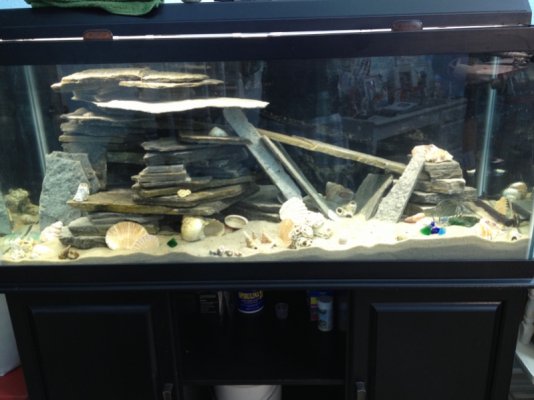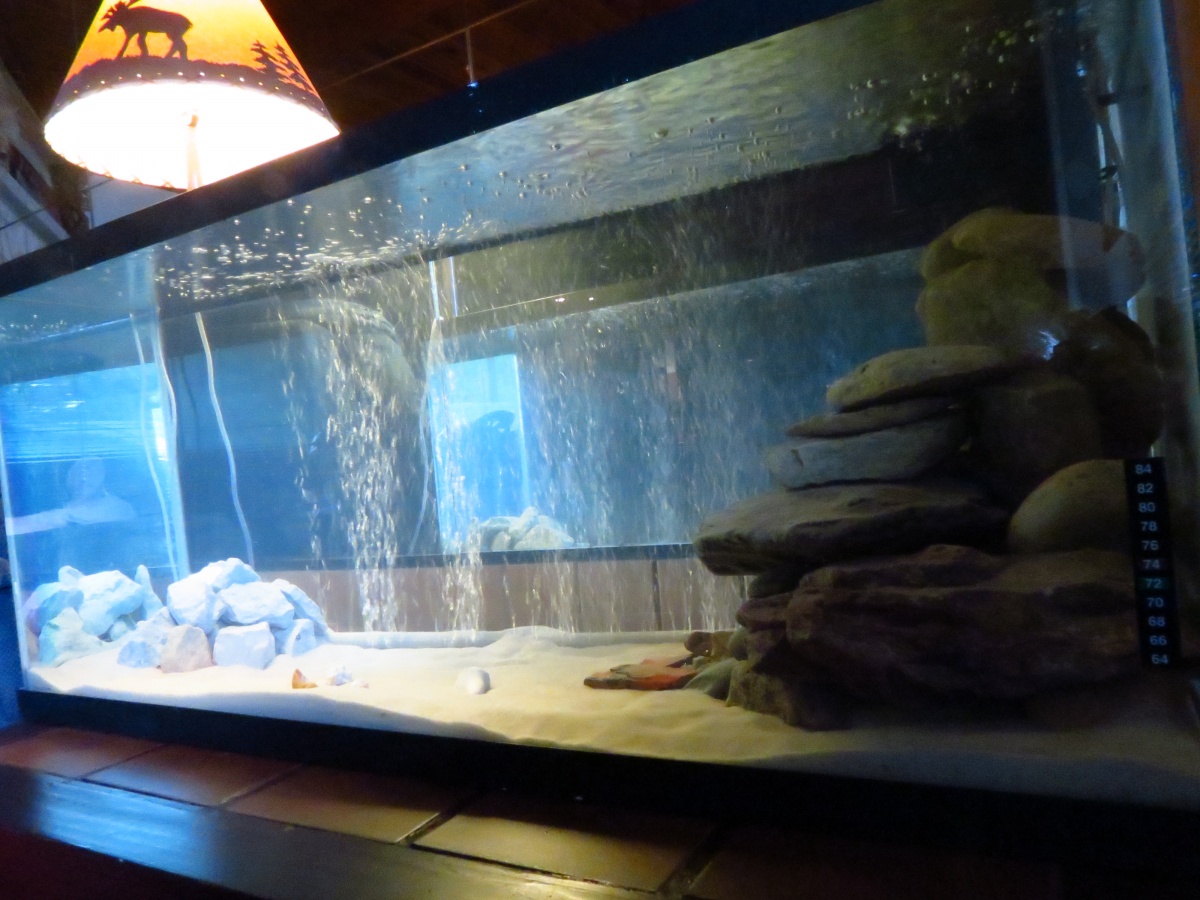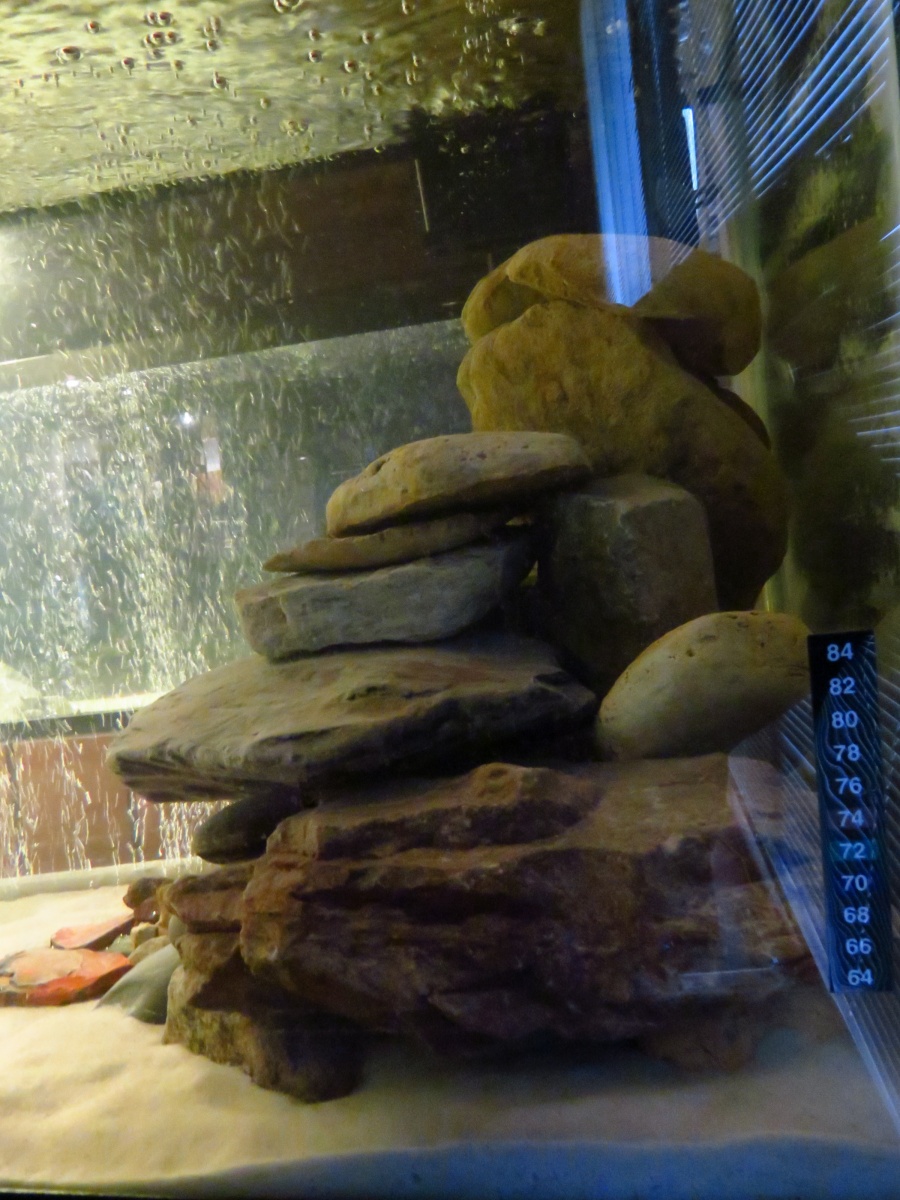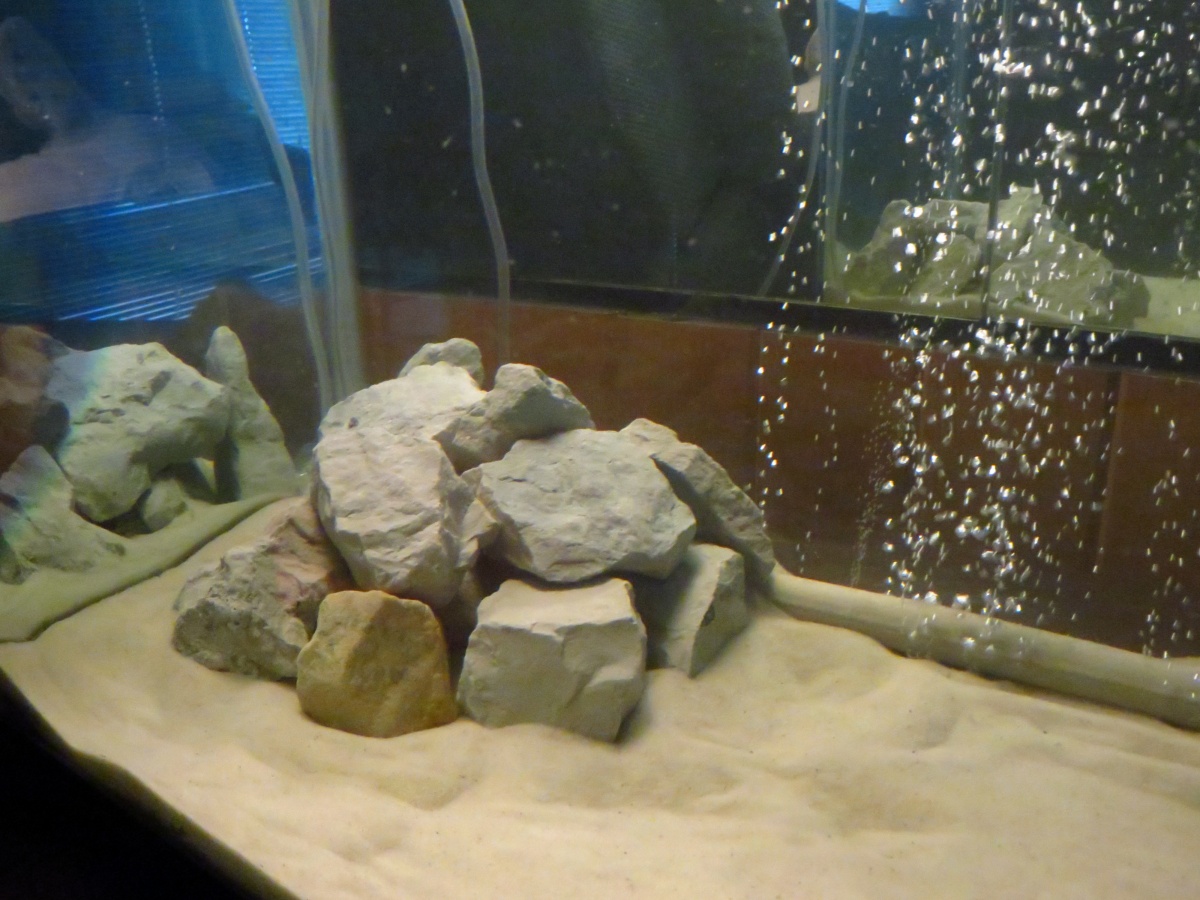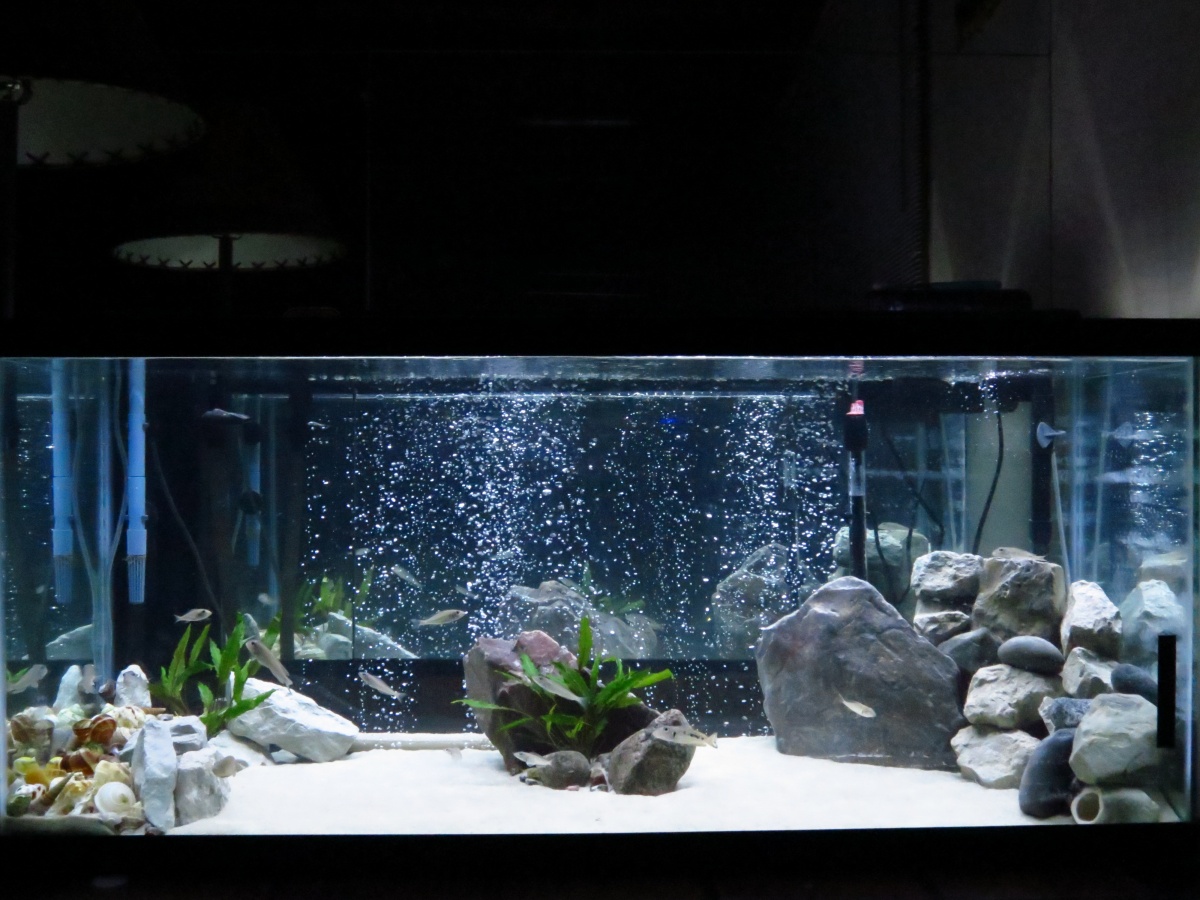Well, things have took a crazy turn. After research, and research and success stories and non-success stories, I decided to try my dream stock. (with a plan B if things so different when they get older - another tank! LOL)
Anyway, I only have 3 real rock dwellers - 2 julis and 1 goby (which I almost didn't get, but glad I did as I love him. His companion passed 24 hours after the trip and had a hard time the whole time - sad) 1 down. They are F1 Eretmodus Cyanostictus congo orange, well he is. I plan on getting a replacement partner down the road. I hope. She was much smaller and just had a rough time at it.
The Julis are Julidochromis Marlieri - unknown collection point already paired up. He hides on her and she bites him alot. Most of the time he likes it and goes nuts doing his mating dance which is really crazy to watch him shake. The rest of time he hides and she hunts him down. She's bigger, so she's bossy.
Therefore, I took down the huge rock pile I had as it took up almost half the tank and was just nuts for 3 rock dwellers. I now have a thin rock pile on the right side perfect for the 2 julis and the goby and still hiding spots available for others in there. I opened up all the sand. I placed a rock in the center to break a line of sight in the sand. They like those rocks, too and recently placed a crypt in there so hope it stays and does well. The male juli has taking a liking to the plant as soon as I put it in there and rarely leaves it. The goby places everywhere.
The shellies I moved all together at the left end. I bought a bag of shells in the craft section at walmart, ordered some online - which ended up too small, and found a couple around the house. There is a pile about 3 inches deep on the left side for them with a rock wall creating a border and more hiding spots for fish. I have 6 ocellatus gold there. They all stick together, cutely have claimed there own shells, feed together at feeding time, hide from the juli and don't care about anyone else. I placed a plant on their end as well. They stick together and stick to their side unless it's feeding time, then they venture out and swim around and hold their own. Cute little buggers. I now know why people put them in tanks of their own which is a thought I have already. I've already seen some tail wagging in them.
I have 3 Callochromis Stappersii Raspberry Head. 1 male/2 female, which I read elsewhere was best and is working out fine. The male however got popeye soon after being added to the tank. Not sure if stress or injury or what, but he now has a very tiny eye on that side, but is doing fine again. They startled easy when I first got them as I knew they would, and it looked like injury to me. He's beautiful anyway and they get along with all great. I watched the male try to court a female already with his dance and sand digging which was an extremely small area about 2x2 and fun to watch. A female entered, but nothing happened.
I have 5 F1 Xenotilapia Ochrogenys. Can't believe I found some. After reading success stories of keep them with shellies, I went for it. I'm glad I did because they are my favorite.
I have 4 young Enantopius Melanogenys that I couldn't pass up because offered at great price and last minute decision. Only about 5 months old.
The weird thing about all of them is that they all "kiss" sometimes. I have watched the Xenos touch lips with the julis and the Melanos touch lips with the stappersii, etc. Especially at feeding time like they swap gum or give each other high 5s. What is that about. I want them to like each other, but not that much! LOL jk It's cute.
I ordered 14 Cyprichromis Leptosoma Kerenge Island from aquabid. All arrived dead, but 5. 4 barely hanging on and 1 looked like it might make it, but all died within the hour or so. But there were 7 in each bag and it stunk, not much air - it didn't look like - bags leaked all over the newspaper that didn't seem packed tight enough so probably had a rough ride of it, too. That was on the 7th. I was supposed to receive replacements with extras, but haven't seen them yet. Still waiting and hoping that comes through next week. Was told waiting to go to breeders, then sick. It was too hot to ship here this week and I let them know, but didn't hear anything back from that email. Hope something is here by the end of the week next week so I don't have to make a fuss and take action.
That made it 15 down. (14 cyps and 1 goby).
Got new light which really brightens it up and they swim so much more and so much higher now with the new light. Much more active. Just love it. I am enjoying this tank very, very much. Can't wait to get my top swimmers and then it's perfect.

